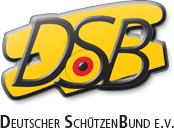Effects of combined relaxation and shooting training on shooting performance in biathlon
(Effekte kombinierten Relaxations- und Schießtrainings im Biathlon)
Applied Tension Release (ATR) training has been successfully used in different clinical contexts in order to enhance the ability to decrease unwanted and unnecessary tension and arousal in everyday life situations (Öst 2002; Lisspers&Almén 2008). To some degree correspondingly, in biathlon, which consists of cross-country skiing and shooting, sportsmen must recover fast after the high intensity skiing bout just before the shooting and moreover, needs to have a ability to focus on shooting under a high external (e.g. public, other competitors) but also internal stress. In one earlier study, Groslambert et al (2003) have shown that 6 weeks of shooting training combined with imagery training improved the stability of rifle at standing position in biathletes. However, there are only few studies considering shooting performance or shooting training in biathlon. Therefore, totally 20 biathletes at high national level (age 20+-4 yr, VO2max 60+-7 ml/kg/min-1, 1-13 (range) years in biathlon) were recruited to the study. First, VO2max and shooting performance at rest and immediately after two sub-maximal exercise intensities (75% and 90% of VO2max) were measured. Thereafter, subjects were randomized into experimental (EXP) and control (CON) groups. During 11 weeks intervention, the EXP group performed specific ATR-training 6 times per week, first with help of specific CD-ROM program (weeks 1-2). Thereafter, ATR training was successively combined with holding and "dry firing" training, with a goal that during the last two weeks of the intervention, ATR was integrated into all shooting training. CON continued their usual shooting training. Shooting performance was measured by SCATT prof. shooting training system® based on laser light, and was determined as a group size (mm) and stability of aiming (mm) for 20 shots at rest, and for 10 shots per each exercise intensities, but also as a total shooting accuracy which was calculated as a total sum of group size and stability of aiming at rest and during both exercise intensities. The exercise mode in all measurements was roller skiing on the treadmill. Totally 12 subjects (EXP n=7, CON n=5) completed the study. No change in VO2max was observed in EXP or CON group. EXP group showed decrease in group size at 75% of VO2max (p<0.05). In addition, stability of aiming was enhanced at rest and at 75% of VO2max (p<0.05) in EXP but also at 90% of VO2max (p<0.05) in CON. The total shooting accuracy was significantly improved (11%) in EXP compared to CON (p<0.05). Therefore, ATR training combined with shooting training enhances the shooting performance, and therefore, if these results can be replicated in further studies, it can potentially be recommended for the biathletes.
© Copyright 2009 14th annual Congress of the European College of Sport Science, Oslo/Norway, June 24-27, 2009, Book of Abstracts. Veröffentlicht von The Norwegian School of Sport Sciences. Alle Rechte vorbehalten.
| Schlagworte: | Biathlon Hochleistungssport Leistungssport Schießen Entspannung Leistung Training Erregung Bewegungsgenauigkeit Belastung Sportpsychologie psychischer Prozess Psychoregulation |
|---|---|
| Notationen: | Biowissenschaften und Sportmedizin Ausdauersportarten |
| Veröffentlicht in: | 14th annual Congress of the European College of Sport Science, Oslo/Norway, June 24-27, 2009, Book of Abstracts |
| Herausgeber: | S. Loland, K. Boe, K. Fasting, J. Hallen, Y. Ommundsen, G. Roberts, E. Tsolakidis |
| Veröffentlicht: |
Oslo
The Norwegian School of Sport Sciences
2009
|
| Seiten: | 604-605 |
| Dokumentenarten: | Kongressband, Tagungsbericht |
| Sprache: | Englisch |
| Level: | hoch |
